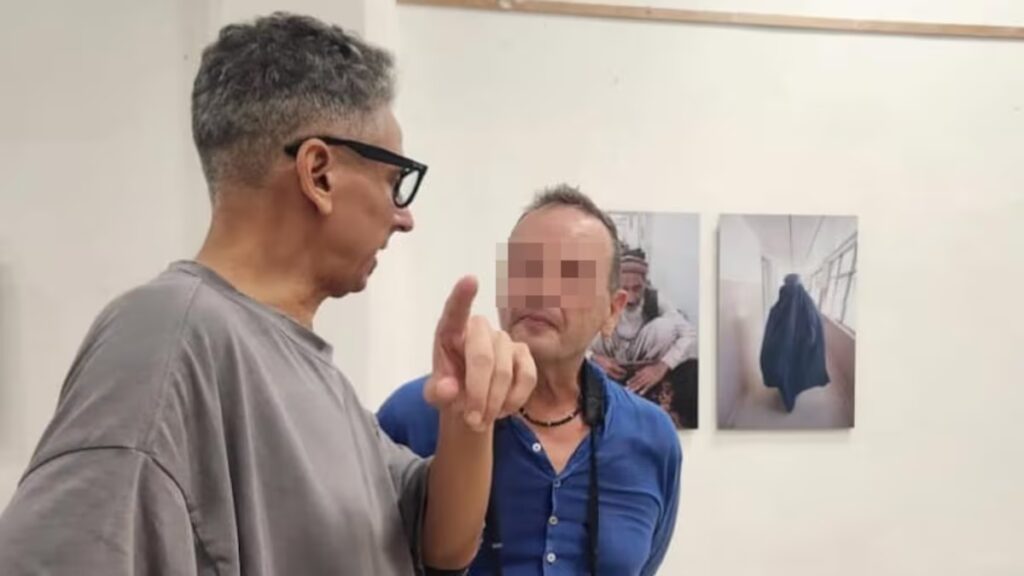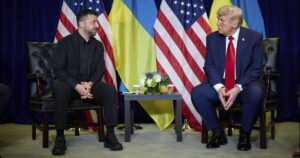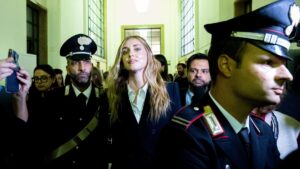
Martiño Ramos Soto – known as Martín Soto to Cubans who met him on the island – had moved around Havana like a fish to water since he arrived in the Cuban capital last summer, on the run from Spanish justice while serving a prison sentence of 13 years and six months for sexually abusing a 12-year-old student in Spain’s Galicia region. He lived quietly in Havana until his crimes became public and on Monday it was announced that he had been arrested by the National Revolutionary Police (PNR).
Those who knew him during the months he spent in hiding in Havana knew nothing of his legal status or his criminal activity until the news broke this weekend. For everyone he was just another Spanish tourist in the city, a businessman taking a break, always with his camera in tow, walking among exhibitions, chatting with artists and young models, with drinks, smiles and music.
The Cuban artistic community has been in shock since the news broke. WhatsApp groups were flooded with photos of Soto at public events, with people who met him expressing their surprise at the revelation. Just a few weeks after settling into a rented house in the Vedado neighborhood of Havana, very close to the central 23rd Avenida, the fugitive began to build a network of contacts within the Havana art scene through his presence in cultural events, organized both institutionally and independently. He created an Instagram profile under the name Martín Soto, using his mother’s maiden name. Through this account he contacted young artists and models, followed reports of cultural projects and shared photos taken at these events. He tried to make himself indispensable.
On October 31, he arrived at the Nodo Habana cultural center, at the intersection of Malecón and Lealtad streets, to participate in a poetry event held on the last Friday of each month. It’s a space open to the public, and Soto stood out, camera in hand, as he was the only foreigner present that day. According to the institution, he offered to take photographs of the poetry meeting, which he would later send via email so that they could serve as visual documentation of the event. Those who were there remember his cordial manner.
adolescent behavior
Among the participants was Iré Lázara Goitizolo Rodríguez, a young visual artist and poet photographed by Soto. She remembers finding it strange to see him photographing and filming young women for so long. The next day, at another event, they met again. He approached her. He was with a couple of young women who looked like models.
“His behavior was adolescent and it surprised me to see him so adult, involved with so many young women. He also asked me if I was going to a listening party in El Vedado for Rosalía’s new album. He seemed very interested in learning about the events that were happening in Havana,” says the young woman, who shared screenshots of her WhatsApp conversations with Soto with EL PAÍS, where they discussed topics related to art. “He provided his contact information very promptly,” she says.

No news from Martín Soto since Friday
Martín Soto took photographs and then contacted the subjects, in person or via Instagram, sending the images to the young artists. He did this during his four months of clandestinity, participating in events of the Cuban contemporary art scene, such as the Post-It modern art competition; November Photographic, photography festival which takes place in November; and the exhibition homage to Belkis Ayón, My soul and I love you (in English, My soul and I love you). The testimonies collected describe Soto as a very sociable person who shared little about his life, limiting himself to saying that he was a businessman, ran a consultancy company in Spain and had taken some time off, without providing further details.
Soto had several engagements this week with acquaintances in Havana, but those who knew him had not been able to reach him as of Friday morning. They also went to the house where he was staying, but no one opened the door. He also stopped answering phone calls. A young model who had posed for him only discovered his true identity after people started leaving messages on a shared Instagram post. She tried to contact him, but had received no response by Friday.
Another young Cuban photographer, who wished to remain anonymous, had interacted with Soto several times after contacting her via Instagram. She is dismayed by the news. “He was a smart guy, a good conversationalist, and it’s shocking when you find out what a monster he is. Why did he want to meet so many people? Why did he take so many photos and expose himself so much here?”

During his time in Cuba, Martiño Ramos was constantly in the public eye and acted with astonishing impunity. An employee of the Fototeca de Cuba, the official cultural institution that organizes the Noviembre Fotoográfico event series, says he saw him at virtually every gathering that season. It was thanks to the images of the incident that we learned where the fugitive was.
“This man, it should be clarified, did not participate in November Photographic as an artist. He simply posed as a photographer and watched as a simple spectator. He infiltrated our community,” explains the specialist, who briefly met Soto around November 6, during an exhibition.
She says it’s significant that Soto disappeared Friday morning, two days before the media first reported he was in Havana, and she believes he was notified before the news broke. After hours of uncertainty, it was revealed Monday afternoon that he had been arrested by Cuban authorities, although the government had not yet released an official statement on the case Monday night.
“The stereotype of the elderly foreigner with the young Cuban girl”
Martiño Ramos was walking along Havana’s Malecón one day in September 2025 when he met a 23-year-old woman. “He took some photos of me there and we started talking. I liked the photos, so I gave him my phone to send them to me. He seemed like a good person and I had no reason to distrust him at that moment,” the young woman, who asked to remain anonymous, told EL PAÍS.
From that day on they remained in contact. “She seemed like a very educated, intellectual, empathetic and very feminist person, with a rather soft voice, which seemed harmless,” she recalls. Days later, they met in Old Havana for another photo shoot and continued talking, even hanging out alone on other occasions, as friends. “I thought he might be a nice guy, because it’s rare to find a man who is knowledgeable on so many topics and empathetic. Now I realize he was just using that rhetoric to flirt.” From that day on they spoke daily for a few weeks. One day, Soto invited her and a friend to a party at his house, to which several people were invited. The young woman found it strange that most of them were young women, between 18 and 29 years old. “It seemed very strange to me, so I started distancing myself.”
A young man – still speaking to EL PAÍS anonymously – says that the fugitive was also at another party, after Silvio Rodríguez’s concert on the steps of the University of Havana on September 19. He says he attended the meeting with his girlfriend, and that during the evening Soto, who had arrived with one of his very young friends, approached to chat. “At first the couple seemed like the stereotype of the older foreigner with the young Cuban, and we didn’t like it.”
The next day, their discomfort turned to suspicion when they noticed that Soto had started following his girlfriend on Instagram, something he hadn’t done with the accounts of the other photographers at the event. “We met at other events, but he wasn’t someone I was interested in getting to know better,” she concludes, recalling Soto’s image as someone who wanted to present herself as a supporter of the feminist movement.
Andy Martínez was shocked to learn Soto’s true identity on Monday. She had barely exchanged words with him, but she had seen him four times: the first at a concert at La Bombilla Verde, a popular bar in Vedado, and the last at an intimate party at a bar called La Azotea de la India. “He always had his camera on,” she adds.
With Martiño Ramos Soto now in custody, those who met him in Havana felt they had been deceived, mocked and insulted. “It’s a mixture of disgust and fear,” confesses one of the young women who interacted with him. “I feel disgust for having had to deal with someone like that and for having cared for him, even just a little. And fear, because knowing that he deceived us makes you feel vulnerable. I’m happy to know that he has been arrested.”
Sign up to our weekly newsletter to get more English-language news coverage from EL PAÍS USA Edition





